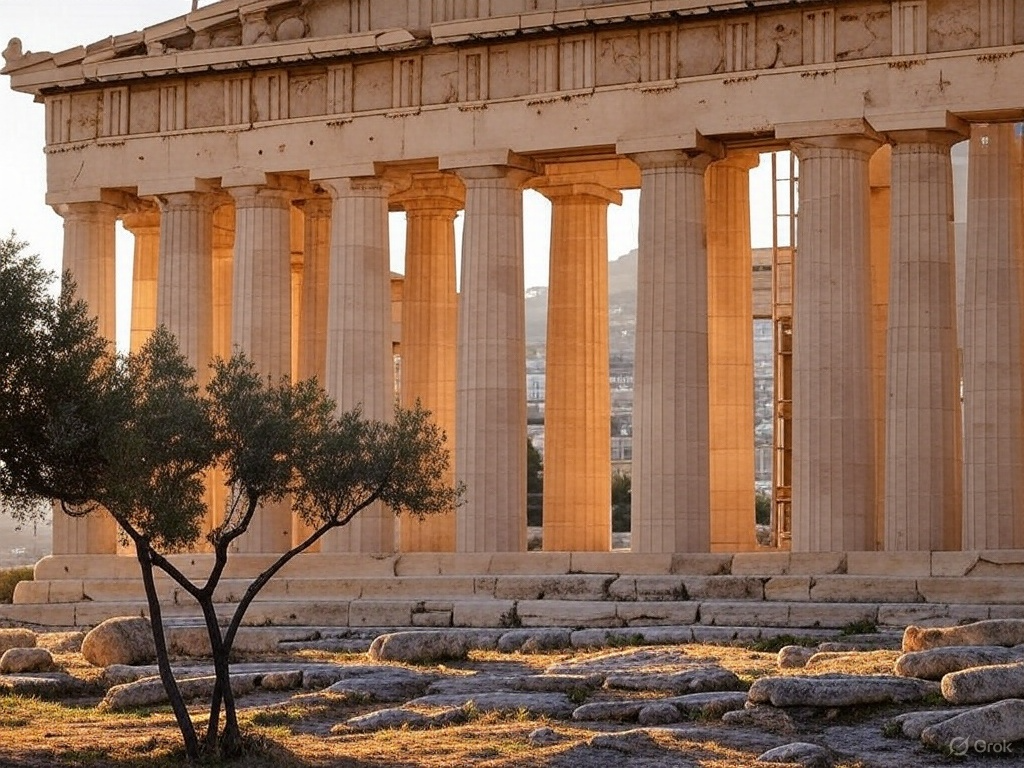Ancient Greek architecture remains one of the most influential styles in history, shaping the design of buildings across centuries and continents. Its emphasis on symmetry, proportion, and grandeur continues to inspire everything from government institutions to cultural landmarks. The architectural principles developed by the Greeks have left an indelible mark on the built environment, influencing the Renaissance, neoclassical movements, and modern urban planning.
Key Features of Greek Architecture
1. The Three Classical Orders
One of the most defining aspects of Greek architecture is the development of three distinct column styles, known as the orders, each with unique characteristics:
Doric Order: The simplest and sturdiest of the three, characterized by a plain, fluted column with a simple capital. The Parthenon in Athens is a prime example of Doric architecture.
Ionic Order: Recognizable by its more elegant, slender columns with scroll-like volutes on the capital. The Erechtheion on the Acropolis exemplifies Ionic design.
Corinthian Order: The most ornate, featuring elaborate capitals adorned with acanthus leaves. Though less common in Greece, it was widely used by the Romans and later architects.
2. Pediments and Friezes
Greek temples and buildings often featured pediments, the triangular upper sections of the façade, filled with intricate sculptures depicting mythological and historical scenes. Friezes, the horizontal decorative bands running along the structure, contained relief carvings that told stories of gods, heroes, and significant events. The Parthenon’s frieze, for instance, famously illustrates the Panathenaic procession.
3. Symmetry, Proportion, and Harmony
Greek architects adhered to mathematical precision in their designs, ensuring buildings were aesthetically balanced. They employed principles such as the Golden Ratio, believed to create the most pleasing proportions. These ideals later influenced Renaissance architects like Leonardo da Vinci and Andrea Palladio.
4. Open-Air Theaters and Civic Spaces
The Greeks designed amphitheaters with exceptional acoustics, featuring a semi-circular arrangement to optimize sound projection. Public gathering places, such as the agora, served as centers of commerce, politics, and social life, foreshadowing modern public squares.
Examples of Greek Influence in Modern Architecture
1. The Parthenon’s Influence
The Parthenon in Athens, a masterpiece of Doric design, has inspired countless neoclassical buildings worldwide, including:
The U.S. Capitol (Washington, D.C.)
The British Museum (London)
The Supreme Court Building (Washington, D.C.)
2. Theaters and Amphitheaters
Greek theaters laid the groundwork for contemporary stadiums and concert halls. The semi-circular design seen in the Theater of Epidaurus influenced modern structures such as:
The Hollywood Bowl (Los Angeles)
The Sydney Opera House (Australia)
Modern sports stadiums with tiered seating arrangements
3. Greek Temple Elements in Government and Public Buildings
Greek temple architecture, characterized by grand colonnades and symmetrical facades, appears in civic buildings such as:
The Lincoln Memorial (Washington, D.C.), which echoes Greek temple aesthetics.
The Pantheon-inspired courthouses and banks worldwide.
European city halls and national monuments that reflect Greek influence.
Enduring Legacy
From Washington, D.C., to Paris, Greek architecture remains a universal symbol of democracy, power, and artistic excellence. Its principles continue to shape not only monumental structures but also everyday architecture, proving that its legacy is as enduring as the myths of the gods themselves. Whether through neoclassical government buildings, modern amphitheaters, or grand civic spaces, the brilliance of ancient Greek architecture continues to stand the test of time.









